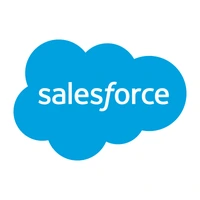Best For | Budget-conscious SMBs needing affordable, all-in-one marketing automation tools. | Large enterprises seeking scalable, customizable CRM with advanced features. |
Price | $550/mo | $25/user/mo |
Features | Automates behavior-based emails | Manages custom CRM |
Pros | Affordable for small biz | Scales for big firms |
Cons | Lacks advanced AI tools | Costs climb real fast |
Trying to decide between SharpSpring vs Salesforce for your business? Both are top-tier CRM and marketing automation platforms, but they have different strengths.
In this comparison, I’ll highlight the pros and cons of each, from pricing to features, so you can make an informed decision.
Whether you need powerful automation or a full CRM system, we’ll break it all down to help you pick the right one for your needs.
Let’s dive into the details and find out which platform is the best fit for your business! 👇
SharpSpring Vs Salesforce: Overview
About SharpSpring
SharpSpring (now part of Constant Contact) is an all-in-one marketing automation and sales platform designed specifically for small-to-medium-sized businesses (SMBs) and marketing agencies.

It provides a comprehensive suite of tools that are often sold separately, combining them into a single, integrated system.
Think of it as a complete toolkit that includes:
- Marketing Automation: To create behavior-based email workflows.
- Email Marketing: To design and send campaigns.
- A Built-in CRM: To manage leads and contacts.
- Landing Page & Form Builder: To capture new leads.
- Social Media Management: To schedule and publish posts.
- Analytics & Reporting: To track campaign performance.
Its primary value proposition is offering a robust, feature-rich platform for a single, predictable monthly fee, making it a cost-effective alternative to more complex and expensive enterprise systems. In short, SharpSpring is a platform for businesses that want powerful marketing and sales tools without the enterprise-level price tag or complexity.
About Salesforce
Salesforce is the world’s leading cloud-based Customer Relationship Management (CRM) platform. Its fundamental purpose is to provide a single, shared view of every customer to all departments within a company—from marketing and sales to customer service and commerce.
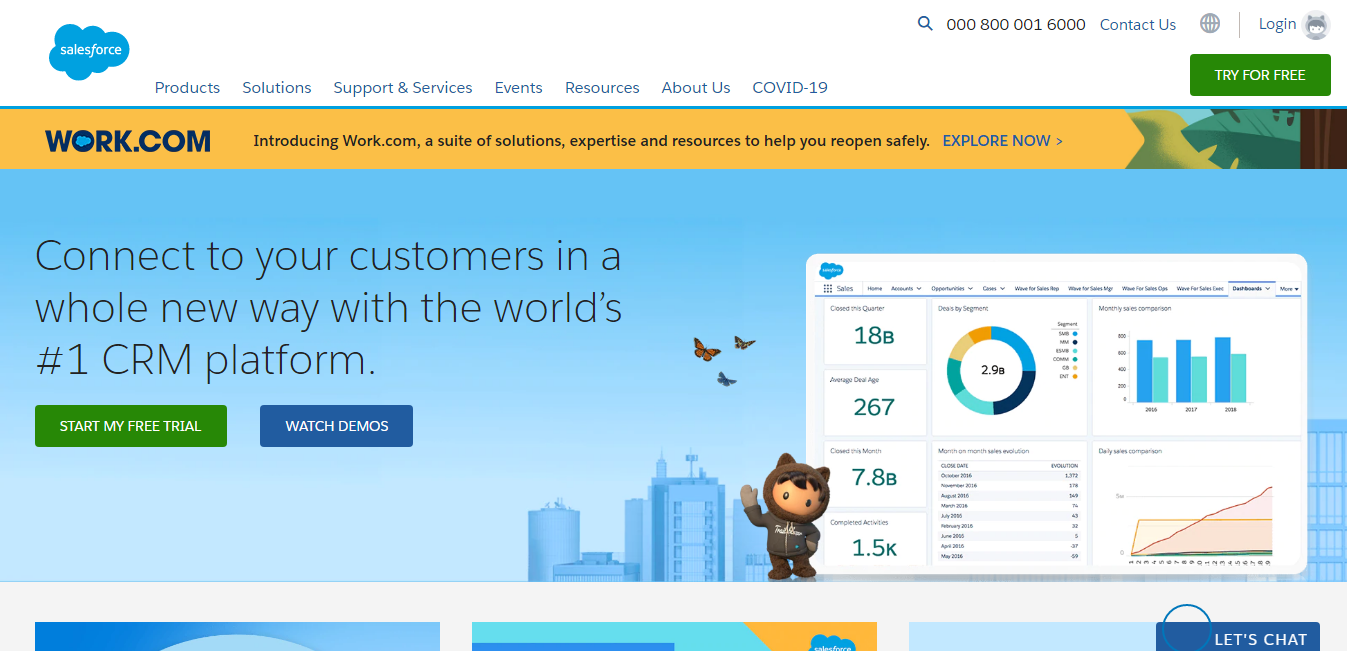
Instead of being just a single tool, it’s better to think of Salesforce as a foundational ecosystem for your business, built upon a core CRM and expanded through different “Clouds” and a massive app marketplace:
- Sales Cloud: The core CRM for sales teams to manage leads, opportunities, and forecasts.
- Service Cloud: For customer support teams to manage cases and provide service.
- Marketing Cloud: For marketing departments to create personalized customer journeys.
- AppExchange: A vast marketplace with thousands of third-party apps that integrate directly with Salesforce, extending its functionality.
The platform’s core strength lies in its immense scalability and customizability. It can be tailored to fit the most complex business processes, making it the go-to choice for mid-market and large enterprise companies that need a system that can grow and adapt with them.
In short, Salesforce is not just a CRM; it’s a comprehensive platform for managing the entire customer lifecycle, designed for companies that require deep customization, robust integration, and enterprise-level scale.
Key Features: A Head-to-Head Comparison
1. Core Architecture:
SharpSpring
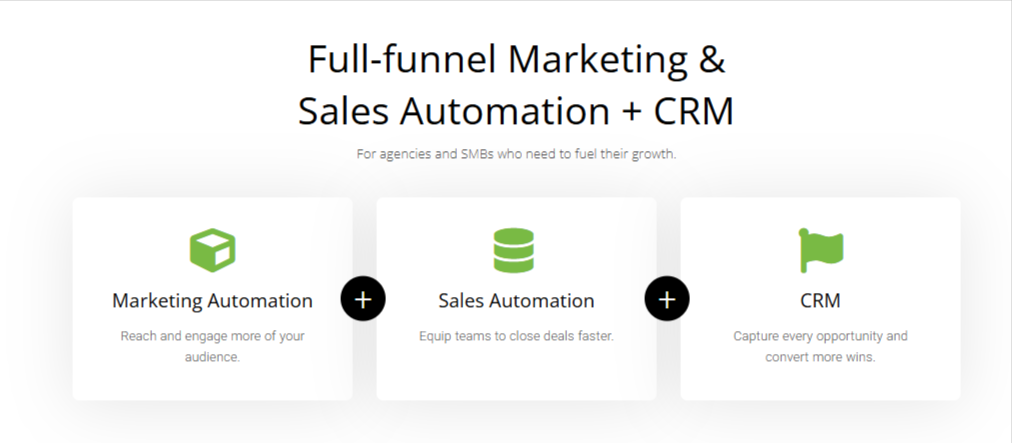
SharpSpring is built as a cohesive, all-in-one marketing and sales suite. Its strength lies in providing a wide array of tools—marketing automation, CRM, landing page builder, social media management—that are pre-integrated and designed to work together from day one.
This unified approach simplifies the tech stack for businesses that want a single platform to manage their entire funnel without needing extensive setup or third-party connectors.
Salesforce
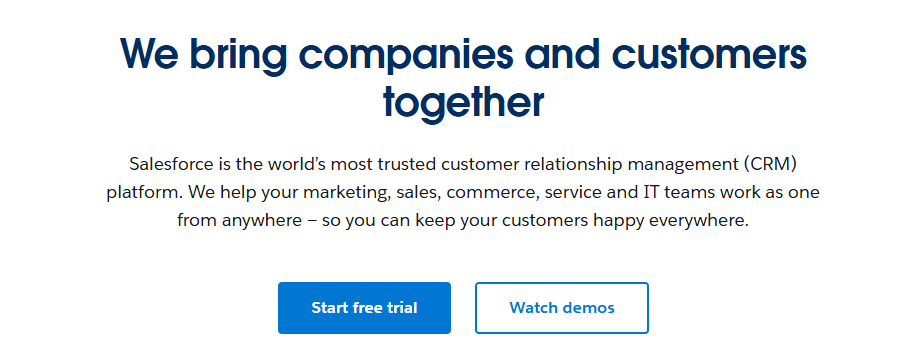
Salesforce operates as a centralized CRM ecosystem. At its heart is the world’s most powerful Customer Relationship Management database, which acts as the single source of truth for all customer data.
Its functionality is expanded by adding different “Clouds” (like Sales Cloud, Service Cloud, Marketing Cloud) and by integrating with thousands of apps from its AppExchange.
This modular architecture makes it incredibly powerful but means that achieving an “all-in-one” feel requires integrating multiple components.
Winner: SharpSpring for out-of-the-box, unified functionality. Salesforce for foundational CRM power and ecosystem depth.
2. Customization and Scalability:
SharpSpring
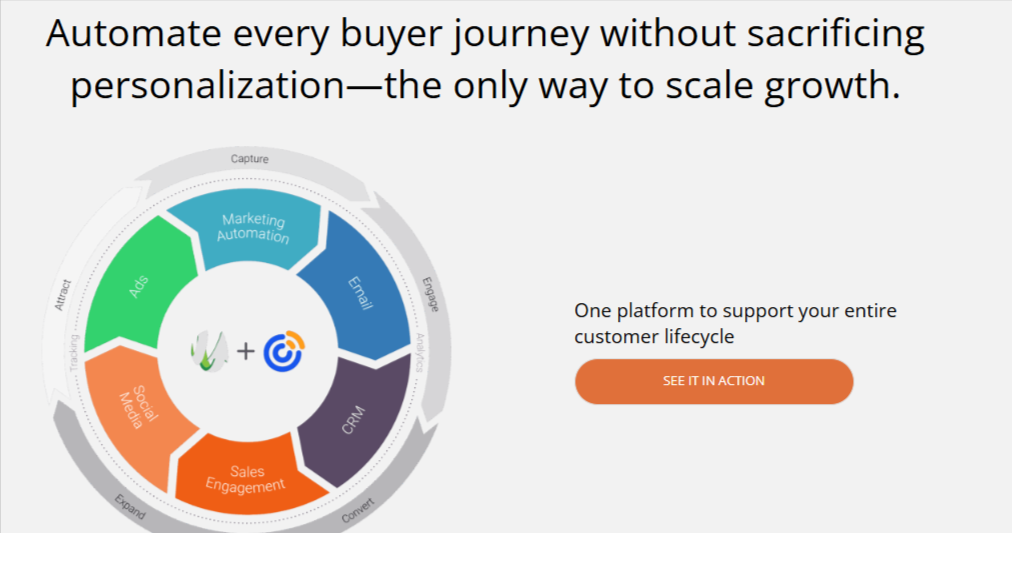
SharpSpring offers strong functionality and customization for its target market of SMBs and agencies. You can create custom fields, design detailed workflows, and build tailored reports.
However, it is fundamentally a ready-made product. Its structure is designed to be used as-is, providing powerful tools that fit most standard business processes without requiring deep technical knowledge to configure.
Salesforce

Salesforce is in a league of its own when it comes to customization. It is designed to be a blank canvas that can be molded to any business process imaginable.
You can create custom objects, fields, and intricate approval workflows, and even use its proprietary Apex code for near-limitless development.
This makes it endlessly scalable, but this flexibility comes with significant complexity, often requiring a dedicated administrator to manage and optimize the system.
Winner: Salesforce, by a landslide, for deep customization and enterprise-level scalability.
3. Primary Focus:
SharpSpring
SharpSpring leads with a marketing-first philosophy. Its most powerful features are rooted in marketing automation, such as its visual workflow builder, behavior-based email triggers, and lead scoring capabilities.
The CRM is robust and tightly integrated, but its primary purpose is to support and convert the leads generated by its marketing engine. It excels at nurturing leads through the entire funnel.
Salesforce
Salesforce (specifically Sales Cloud) has a dominant sales-first focus. It is unrivaled in its ability to manage complex sales pipelines, track opportunities, create forecasts, and manage sales territories.
While it has powerful marketing capabilities (especially with Pardot or Marketing Cloud), its core DNA is empowering sales teams to close deals more efficiently.
Winner: SharpSpring for marketing automation and funnel management. Salesforce for sales pipeline management and forecasting.
4. Ease of Use and Target User
SharpSpring

SharpSpring is designed for the hands-on marketer or agency professional. The interface is built to make creating campaigns, building forms, and analyzing results straightforward.
While comprehensive, it aims for a gentler learning curve so that users can become proficient and see results without needing specialized certifications or a background in database management.
Salesforce
Salesforce is built for the dedicated Salesforce Administrator and sales operations teams. The user experience for a salesperson can be simple, but setting up and managing the backend is a professional skill.
Its complexity and power mean that to get the most out of the platform, businesses typically need an in-house expert or consultant who understands its intricate structure and capabilities.
Winner: SharpSpring for general ease of use and accessibility for non-technical users.
Pricing options
Sharpspring:
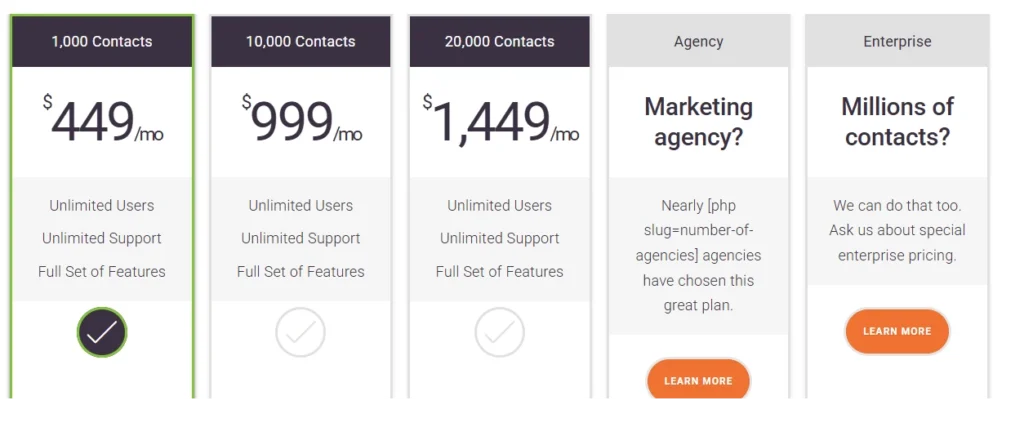
SharpSpring’s pricing is all-inclusive. All plans come with unlimited users, unlimited support, and all features. The price only changes based on the number of contacts in your database.
- 1,000 Contacts: ~$449 per month
- 10,000 Contacts: ~$999 per month
- 20,000 Contacts: ~$1,449 per month
Salesforce:
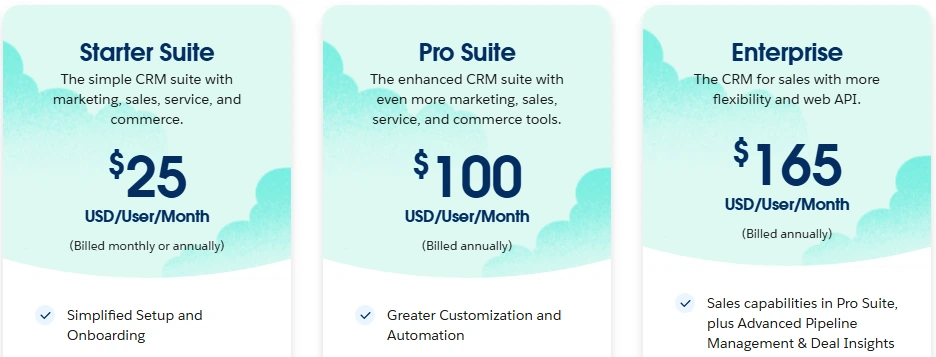
- Starter Suite: $25/user/month – Basic CRM with lead and opportunity management.
- Pro Suite: $100/user/month – Enhanced tools, sales quoting, and real-time chat.
- Enterprise: $165/user/month – Advanced pipeline management and conversation intelligence.
- Unlimited: $330/user/month – Includes predictive AI, sales engagement, and full sandbox.
- Einstein 1 Sales: $500/user/month – Adds generative AI, performance management, and data unification.
Customer Support
Sharpspring:
The majority of the reviews reflect a good 24/7 customer support catering to the needs of their customers via email, phone, live support, training, and tickets.
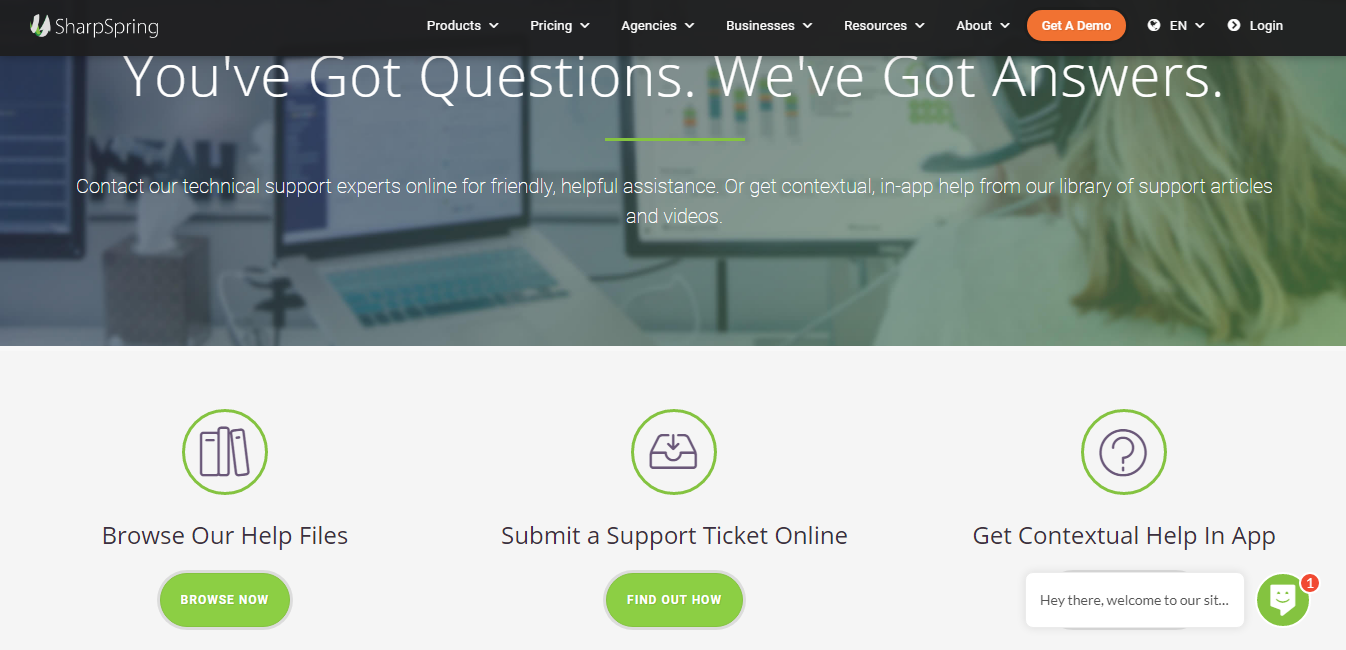
Salesforce:
The backend and support team are always available, and most of the customers are extremely happy with the support. However, there is no option for live chat support, and the only thing customers can do is send emails.
They can improve on the customer support aspects as compared to Sharpspring.
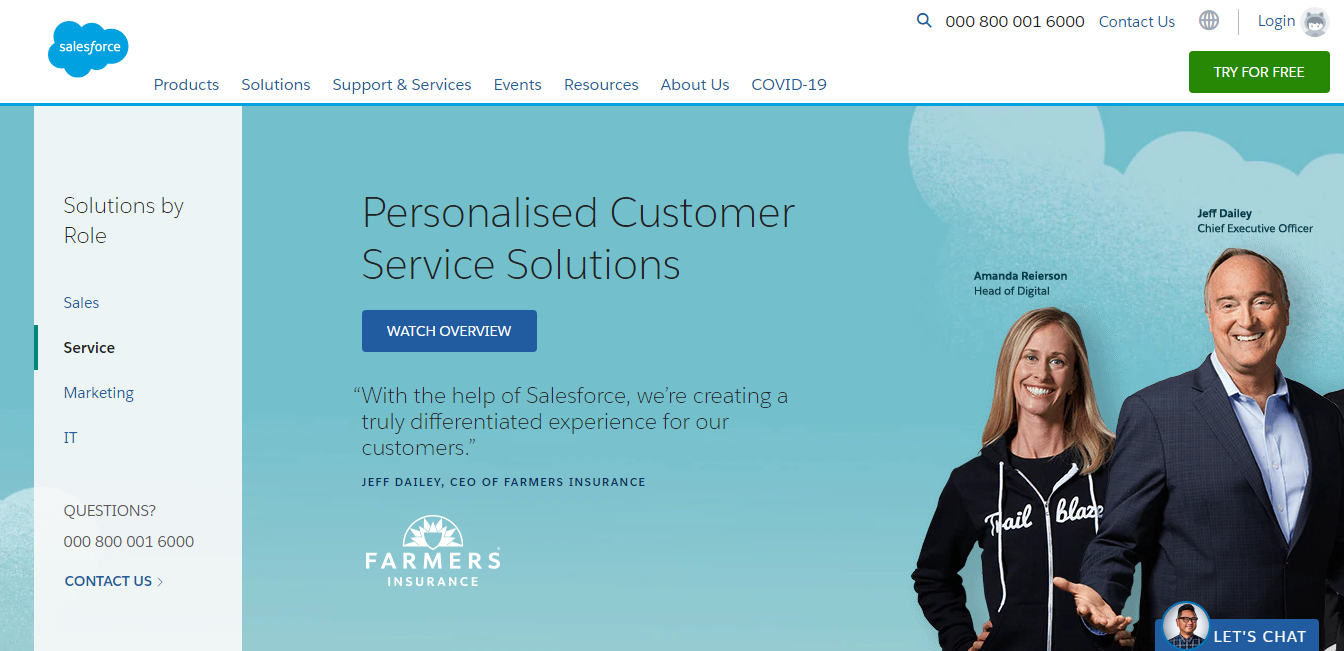
SharpSpring Vs Salesforce: Pros and Cons
SharpSpring
Pros
- Provides affordable pricing perfect for small businesses always
- Simplifies setup process for users with minimal effort
- Delivers exceptional support team response every single time
- Scales smoothly as your business grows without fuss
- Offers flexible plans to fit any budget nicely
- Boosts marketing efficiency with straightforward tools daily
- Maintains consistent performance across all campaigns reliably
Cons
- Lacks advanced AI features for deeper automation needs
- Features dated interface that feels clunky sometimes
- Limits customization options for very specific tasks often
Salesforce
Pros
- Scales seamlessly for large enterprises with big needs
- Offers extensive customization to match any workflow perfectly
- Provides top-tier support team available whenever you call
- Enhances sales team productivity with smart insights fast
- Keeps platform fresh with regular impactful updates yearly
- Builds confidence with robust security measures every day
- Connects huge community for tips and growth ideas
Cons
- Increases costs quickly as your usage scales up
- Presents steep learning curve for brand new users
- Demands powerful hardware to run smoothly without lag
FAQs on SharpSpring & Salesforce Comparison 2025
Can SharpSpring’s automation rival Salesforce’s marketing tools?
SharpSpring’s budget-friendly flows compete; Salesforce adds pro-level finesse.
What cutting-edge updates hit SharpSpring vs Salesforce this year?
SharpSpring refines forms; Salesforce rolls out sharper AI analytics.
How do SharpSpring and Salesforce differ for scaling marketers?
SharpSpring stays simple, affordable; Salesforce handles complex growth better.
Which platform’s learning curve suits non-tech teams more?
SharpSpring’s gentler start helps; Salesforce demands more tech chops.
Does SharpSpring or Salesforce lead for sales pipeline precision now?
Salesforce’s pipeline tools dominate; SharpSpring’s lighter but effective.
How robust are SharpSpring vs Salesforce integrations for multi-tool setups?
Salesforce’s 1,000+ apps soar; SharpSpring’s solid but less vast.
Quick Links:
Conclusion: SharpSpring & Salesforce 2025 |
When it comes to looking for platforms and tools for a company, mid-sized business, small business, marketing agency, or enterprise, both Sharpspring and Salesforce are in-demand tools.
Although most of the features provided by both of them are almost the same, they surely operate in slightly different ways.
Both tools keep customer needs and market trends in mind. However, the implementation of artificial intelligence in CRM tools is undoubtedly a revolutionary feature introduced by Salesforce. On the surface, the services offered are quite the same.
They both offer features like CRM, third-party integrations, lead-generating funnels, analytics, marketing automation, and great customer support. However, distinctions can be drawn by diving deep into the analysis above.
As far as pricing and high security are concerned, Salesforce undoubtedly leads the race there.
On the other hand, if you are someone looking for monthly pricing tools, more agency, and enterprise-friendly tools, then Sharpspring is your cup of tea. Both offer a free demo, with no need to enter credit card details. However, once plans are purchased, no refund is given.
Ultimately, it is all about understanding what suits your brand and business or agency and, accordingly, choosing the best online CRM and Automation tool in the market.
Make an informed decision after reading various reviews, doing proper market research on all alternatives available, and affordable pricing, and weighing all the pros and cons.


